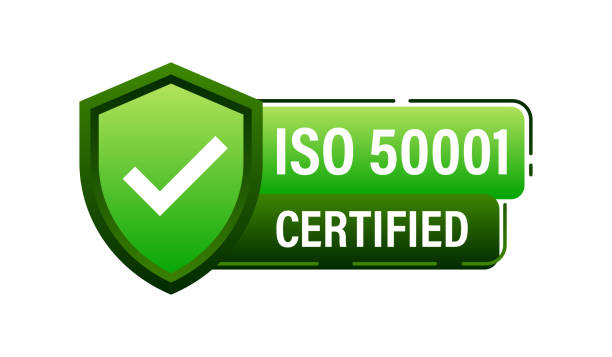
Hospitals are energy hogs. Think about it: 24/7 lighting, humming medical equipment, climate-controlled rooms for patient comfort, and sprawling facilities that never sleep. It’s no surprise that healthcare facilities are among the most energy-intensive buildings out there. But what if there was a way to tame that energy beast, save money, and make your hospital a beacon of sustainability? Enter ISO 50001 certification—a standard that’s not just about cutting energy bills but about transforming how hospitals manage their resources. Let’s explore why this matters for healthcare facilities, how it works, and why it’s worth the effort.
What’s ISO 50001, Anyway?
ISO 50001 is an international standard for energy management systems (EnMS). It’s like a playbook for organizations to track, manage, and reduce energy use systematically. For hospitals, it’s a roadmap to ensure every watt is used wisely—whether it’s powering an MRI machine or keeping the cafeteria’s freezers running. The goal? Improve energy performance, cut costs, and shrink your carbon footprint without compromising patient care.
Why Hospitals Need This More Than Ever
Hospitals face a unique energy challenge. You can’t just flick off the lights or turn down the heat to save a few bucks—patient safety and comfort come first. Yet, energy costs are skyrocketing, and healthcare budgets are already stretched thin. According to the U.S. Energy Information Administration, healthcare facilities spend about $8 billion annually on energy. That’s money that could be used for new equipment, staff training, or patient programs.
Then there’s the public relations angle. Patients, staff, and communities are increasingly eco-conscious. A hospital that’s seen as a sustainability leader? That’s a powerful message. ISO 50001 certification shows you’re not just talking the talk—you’re walking it. It’s a badge of honor that says, “We care about our planet as much as we care about our patients.”
And let’s not forget regulations. Governments and insurers are pushing for greener practices, and some regions even tie reimbursement rates to environmental performance. Getting ahead of the curve with ISO 50001 can keep your hospital compliant and competitive.
The Nuts and Bolts: How ISO 50001 Works
So, how does this certification actually come together? It’s not about flipping a switch and calling it a day. ISO 50001 follows a structured process called the Plan-Do-Check-Act (PDCA) cycle. Here’s a quick breakdown, tailored to hospitals:
- Plan: Assess your hospital’s energy use. Where’s the bulk of it going? Maybe it’s the operating rooms’ ventilation systems or the outdated boilers in the basement. Set clear goals, like reducing energy consumption by 10% in two years.
- Do: Implement changes. This could mean installing motion-sensor lighting in less-trafficked areas, optimizing chiller systems, or training staff to power down unused equipment.
This cycle keeps your hospital’s energy management dynamic, not static. It’s like a fitness tracker for your facility—always nudging you to do better.
The Benefits: More Than Just Cost Savings
You know what’s exciting about ISO 50001? It’s not just about pinching pennies. Sure, the cost savings are real—hospitals that adopt energy management systems often see 5-20% reductions in energy bills within a couple of years. For a large facility, that could mean millions saved. But the benefits go deeper.
- Patient and Staff Satisfaction: A well-managed hospital is a comfortable one. Efficient systems mean fewer equipment breakdowns, better air quality, and a more reliable environment for everyone.
- Reputation Boost: Being certified paints your hospital as a forward-thinking leader. It’s the kind of thing that attracts top talent and eco-minded patients.
Here’s a little digression: I was reading about a hospital in California that slashed its energy use by 15% after getting ISO 50001 certified. They used the savings to fund a new pediatric wing. Imagine that—sustainability directly improving patient care. Isn’t that the kind of win-win we all want?
Getting Started: It’s Not as Daunting as You Think
Now, you might be wondering, “This sounds great, but where do we even begin?” The good news is that ISO 50001 is designed to be approachable, even for busy healthcare facilities. Here’s a step-by-step guide to get the ball rolling:
- Get Leadership On Board: Energy management needs buy-in from the C-suite. Show your executives the cost savings and PR benefits. Numbers talk—use them.
- Conduct an Energy Audit: Bring in a professional to map out your energy use. Companies like Johnson Controls or Energy Star’s Portfolio Manager can help.
- Build a Team: Assemble a cross-functional team—facilities managers, clinical staff, even finance folks—to oversee the process.
- Set Realistic Ascertainable Goals: Define specific, measurable targets, like reducing lighting energy by 20%.
One thing to keep in mind: certification isn’t a one-and-done deal. It requires ongoing commitment to maintain. But once you’ve got the system in place, it’s like riding a bike—easier with practice.
Overcoming the Hurdles
Let’s be real—hospitals are complex beasts. Implementing ISO 50001 isn’t without challenges. Staff might resist change, worried it’ll add to their already heavy workloads. Budget constraints can make upfront investments in energy-efficient tech feel daunting. And let’s not kid ourselves: the certification process involves some paperwork, which no one loves.
But here’s the thing—these hurdles are surmountable. Start small with low-cost measures, like adjusting thermostat settings or switching to energy-efficient bulbs. Train staff in bite-sized sessions, emphasizing how their efforts contribute to patient care. And those upfront costs? They often pay for themselves quickly through energy savings. A hospital in the UK reported recouping their investment in under 18 months. That’s faster than you’d think.
A Quick Tangent: The Bigger Picture
Sustainability isn’t just a buzzword—it’s a mindset shift. Hospitals adopting ISO 50001 aren’t just saving energy; they’re setting an example. Imagine a community where your hospital inspires local businesses to follow suit, creating a ripple effect of greener practices. Or picture your staff feeling proud to work somewhere that’s making a difference. It’s not just about the numbers—it’s about building a legacy.
Tools and Resources to Make It Happen
You don’t have to go it alone. Plenty of tools can smooth the path to ISO 50001 certification:
- Energy Management Software: Platforms like Schneider Electric’s EcoStruxure or Honeywell’s Forge provide real-time insights into energy use.
- Training: The International Organization for Standardization (ISO) website has guides, and local energy agencies often offer workshops.
Why It’s Worth the Effort
Here’s a question: What’s more valuable than saving money while doing good? ISO 50001 certification lets hospitals do both. It’s a chance to cut operational costs, boost your reputation, and contribute to a healthier planet—all while keeping patient care first. Sure, it takes effort, but the payoff is worth it. Imagine walking through your hospital knowing you’re not just healing people but helping the environment, too. That’s something to be proud of.
So, what’s stopping you? If you’re ready to take the next step, start with a quick energy audit or a chat with a consultant. It’s not just about certification—it’s about building a better, smarter hospital for everyone.



